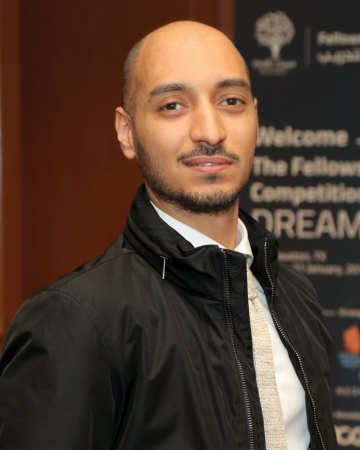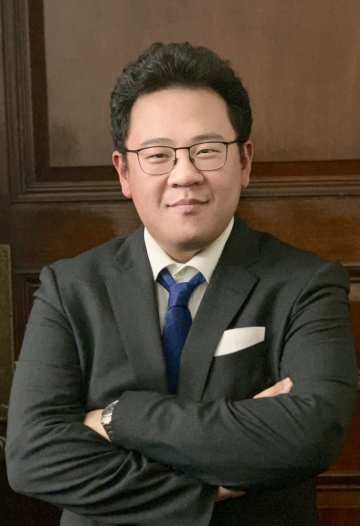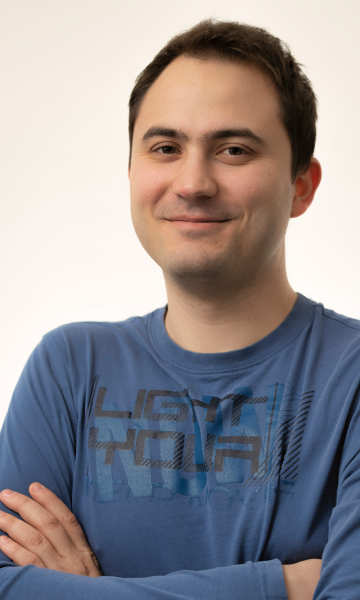Additive Manufacturing
I was first drawn to Additive Manufacturing from my work on the tribology of artificial hip joints. Around 2010 3D printed patient specific implants were being proposed as a means of reducing implant failure and improving fit. I pondered on the mechanical differences between traditionally manufactured implants versus a 3D printed one, and how this might affect its tribological performance. I became fascinated with this manufacturing technology and have since expanded my research interests to numerous aspects of Design for Additive Manufacture (DfAM) and 3D printing technology development. My general hypotheses is that printers are capable of far more than we currently ask them to. This could be limitations caused by human imagination and our understanding of appropriate design principles, or limitations in control software. Compared to traditional manufacturing technologies Additive Manufacturing vastly expands the design space in terms of achievable geometries and material/mechanical properties.
Tribology

Much of my research has been concerned with products which interact with biological systems, such as artificial implants, foods and cosmetics. The performance of these products can be linked to their tribological properties (friction, wear and lubrication); be it prolonging it's life span through the reduction of wear (Artificial Implants) or altering a sensory response through controlling the friction and operating lubrication mechanisms (Foods and Cosmetics).
Artificial Joints:
Failure of artificial joints is a result of surgeon (non-optimum implant position), patient (gait, life style) and implant design (material selection) factors. These can lead to poor tribological (friction, wear and lubrication) conditions. Little is known about the mechanisms which cause the accelerated wear of some artificial implants. My research seeks to expand our understanding of how synovial fluid operates as a lubricant. To date many of the design principles applied to the design of artificial joints is based on our understanding of mechanical bearings and oil (Newtonian) based lubricants. By gaining an understanding of synovial fluid as a lubricant we can form a new design paradigm for artificial joints.
Foods and Cosmetics:
Feel is related to the tribological properties of the interface. For many consumer products, in particular foods, beverages and topical lotions, how they feel during consumption, or application, is important, otherwise they might not be used despite their health benefits. How these products feel during and after use are critical to consumer choice and acceptability.
The processing of foods and beverages, or the application of topical formulations is a dynamic process. This means their mechanical, rheological and tribological characteristics are intrinsically transient. This creates a challenging design problem; how do we control sensations throughout the product's life span?
This work is developing strategies to capture the dynamic aspects of oral processing or skin cream application. The aim is equip formulators and manufactures with a scientific appreciation for variations in consumer haptic response, improve measurement capabilities of tactile perception and reducing the subjectiveness and reliance upon human panel testing.
Current projects and students

Project: Mass Customisation of Bespoke Additive Manufactured Personal Equipment through Parametric Design
Student: Shiya Li

Mass Customisation (MC), an oxymoron that means delivering customised goods and services to consumers at the efficiency of mass production. It can bring substantial benefits for consumers and businesses alike. Unfortunately, the realization of true MC has not been easy due to the limitation of traditional manufacturing technologies. Additive Manufacturing (AM) has been identified as a key enabler of MC due to its negligible tooling costs associated with producing one-off items. The challenge remains to scale up the production while keeping costs low. This PhD aims to bring down the prohibitive AM design cost through replacing its highly knowledge- and labour-intensive design process with a fully automated pipeline. Case studies include, craniofacial personal equipment such as medical breathing masks and eyewear. This work aims to make AM more accessible for businesses, thus bringing true mass customisation to the general public.
Project: The Tribological behaviour of 3D Printed Metals
Student: Mohanad Bahshwan
 In partnership with the Department of Mechanical Engineering, Tribology Group. This PhD involves multi-disciplinary research in metal Additive Manufacturing and Tribology (friction, lubrication, and wear). Understanding the tribological properties of materials is of extreme importance in complex systems involving many moving parts (automotive, aerospace, medical implants) as friction and wear lead to decreased system efficiencies and shorter components lifespan. Thanks to AM, parts with complex geometries and embed functions can be produced. However, the tribological properties of AM components have not been explored in-depth. Mohanad is utilizing Selective Laser Melting (SLM) technology to investigate the possibility of altering the tribological properties of commercial 316L stainless steel by changing the SLM process parameters. Utilizing advanced imaging techniques such as Scanning Electron Microscopy and Electron Backscatter Diffraction to characterize the complex microstructure induced by SLM manufacturing.
In partnership with the Department of Mechanical Engineering, Tribology Group. This PhD involves multi-disciplinary research in metal Additive Manufacturing and Tribology (friction, lubrication, and wear). Understanding the tribological properties of materials is of extreme importance in complex systems involving many moving parts (automotive, aerospace, medical implants) as friction and wear lead to decreased system efficiencies and shorter components lifespan. Thanks to AM, parts with complex geometries and embed functions can be produced. However, the tribological properties of AM components have not been explored in-depth. Mohanad is utilizing Selective Laser Melting (SLM) technology to investigate the possibility of altering the tribological properties of commercial 316L stainless steel by changing the SLM process parameters. Utilizing advanced imaging techniques such as Scanning Electron Microscopy and Electron Backscatter Diffraction to characterize the complex microstructure induced by SLM manufacturing.
Project: Structurally optimized bio-receptive materials via Additive Manufacture
Student: Livia Kalossaka
--tojpeg_1558082233335_x2.jpg?r=5818) Through a bionic approach - combining properties of the synthetic and natural world - it is envisaged that a sustainable way to create smart materials can be developed. The aim of this research is to combine chemistry, design and manufacturing to create structurally graded materials that can promote natural growth. By developing such bio-receptive materials it is envisaged that natural growth patterns can be tuned to the desire of the user. Such materials which harness the power of biological constructs could then be applied to different fields such as construction materials, tissue regeneration and agriculture.
Through a bionic approach - combining properties of the synthetic and natural world - it is envisaged that a sustainable way to create smart materials can be developed. The aim of this research is to combine chemistry, design and manufacturing to create structurally graded materials that can promote natural growth. By developing such bio-receptive materials it is envisaged that natural growth patterns can be tuned to the desire of the user. Such materials which harness the power of biological constructs could then be applied to different fields such as construction materials, tissue regeneration and agriculture.
Project: The effect of internal structure on the shape memory effect of shape memory polymers
Student: Jiwoo Choi

The use of Shape Memory Polymers with Additive Manufacturing has become known as 4D Printing due to the addition of ‘time’ as an extra dimension. SMP objects can be designed to move or morph along a designed path so that complex motion paths can be achieved and a whole range of functions carried out. This PhD is investigating the potential to control the shape transformation behavior through altering the internal structure of objects without compromising the external geometry. The work aims to make SMP technology more accessible to industry, as design constraints are not compromised and a greater level of control of the shape memory effect can be achieved within the limited material library.
Project: Investigating the suitability of mechanical metamaterials for the next generation discriminating mechanisms
Student: Usman Waheed

Through advancements in additive manufacturing, architected materials can be designed to respond in unique ways for actuation. These functional materials, often known as mechanical metamaterials, are programmable, and open an exciting avenue into 3D mechanical logic devices. This project aims to develop mechanical metamaterial systems through a multi-material approach, combining anisotropic structures with bistable mechanisms. This allows the formation of structures that can perform mechanical logic in any planar direction. Mechanical metamaterials can be employed as mechanical logic systems to perform discriminatory logic for multiple applications, including high security devices. Through a combinatorial approach, we hope to show the programmable nature of mechanical metamaterials can be developed to perform multi-bit discriminatory logic in a truly 3-dimensional space.
Project: Development of a novel intra-stereolithography Bio-Printing process
Student: Borut Lampret

Current Bio-Printing methodologies are limited to the creation of cell cultures and scaffolds that allow cellular material to grow within them to create tissue-like structures. These simple materials lack sophistication, are non-functionalised and are reliant on the scaffold to determine mechanical properties. In comparison, biological materials such as cartilage, are functionalised hierarchical structures with graded mechanical properties tuned to a specific task. As yet, 3D printing has not been able to match nature's ability to create such structures. This project aims to develop a novel 3D printing method, that combines synthetic biology and opto-genetics to stimulate cell activity using external inputs. Focus is on developing the advanced optical methods needed to control the light signals (wavelength and intensity) at precise locations within the 3D matrix. Illuminating a precise spot within a gel matrix presents several challenges, including (but not limited too) diffraction and dispersion of the illuminating beam, as well as achieving the required intensity without causing deleterious effects on the surrounding matrix material. A successful outcome is a system that can 3D print an object of a desired design repeatedly with high accuracy.

